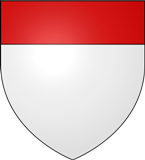 « … e l’esultante di castella e vigne suol d’Aleramo» (the land of Aleramo full of castles and vineyards» (Giosuè Carducci, Piedmont)
« … e l’esultante di castella e vigne suol d’Aleramo» (the land of Aleramo full of castles and vineyards» (Giosuè Carducci, Piedmont)
(Monfrà [mʊɲ'fra] in Piedmontese dialect)
Its territory, almost exclusively of hilly nature, is primarily within the provinces of Alexandria and Asti.
It extends southward from the right bank of the Po river until the foot of the’Ligurian Apennines on the border with the province of Genoa and Savona province and borders on other historical geographic regions of Piedmont in the province of Cuneo, i.e. Langhe and Roero.
There are various interpretations and assumptions on the’etymology of the word “Monferrato”, but to date noone certain. Among all we can recall: the one supported by Aldo di Ricaldone that it derives from “Mount” and from “farro”, a variety of wheat; another that it is derived from the Latin “Mons ferax”, that is fertile and rich mountain; yet another would refer to the shackles (ferri) left by the Romans in their conquest, from which “Mons ferratus”; finally an interpretation would derive from the legend that Aleramo, wanting to shoe a horse and not finding suitable materials, used a brick (“mun” in Monferrato's dialect) and so the horse was shod “frà”: Hence the name Monferrato.
The Monferrato can be distinguished into three main portions:
- Basso Monferrato (or Casale area): rolling hills that, except for the Sacro Monte di Crea (455 m), never reach heights of over 400 meters; the part of the province of Alexandria around Casale Monferrato (the ancient capital of Monferrato). It is bounded on the North and on the East by the course of Po river and Tanaro. It includes Murisengo, San Giorgio Monferrato, Vignale Monferrato.
-
 Monferrato Astigiano (or Basso Monferrato Astigiano): the entire province of Asti (with the exception of the Langa Astigiana); mostly hilly conformation and several historical villages such as Nizza Monferrato, Cortanze, Cocconato, Montiglio and Canelli. Asti is the geographic heart of the macro-area, bounded on the South by the Valley of the River Belbo and on the West approximately from the path of the creek Versa and where is located the orographic right l ’ Asti. The highest point of the area is the hill of Albugnano at 549 metri sea level. It also includes Castellero, Costigliole d'Asti, Casorzo, Castagnole Monferrato, Castelnuovo Don Bosco, Calosso, Moncalvo (ancient first capital of the marquisate of Montferrat) , Montemagno.
Monferrato Astigiano (or Basso Monferrato Astigiano): the entire province of Asti (with the exception of the Langa Astigiana); mostly hilly conformation and several historical villages such as Nizza Monferrato, Cortanze, Cocconato, Montiglio and Canelli. Asti is the geographic heart of the macro-area, bounded on the South by the Valley of the River Belbo and on the West approximately from the path of the creek Versa and where is located the orographic right l ’ Asti. The highest point of the area is the hill of Albugnano at 549 metri sea level. It also includes Castellero, Costigliole d'Asti, Casorzo, Castagnole Monferrato, Castelnuovo Don Bosco, Calosso, Moncalvo (ancient first capital of the marquisate of Montferrat) , Montemagno. - Alto Monferrato: southward from the Val Bormida up to touch the feet of’Ligurian Apennines; it is bordered to the West by the Bormida di Spigno Valley and to the East by the western portion of the valle Scrivia. The main centre is Acqui Terme.
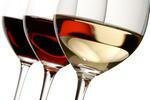 The Monferrato is one of the best-known regions wineries Italy in the world, especially as regards the wines rossi and sparkling wines. Viticulture is pervasive throughout the territory, making the wine not only an element of economic wealth of ’ the entire region but also, and above all, a true symbol of culture and tradition Monferrina. The widespread dissemination of indigenous vines and consequently a diverse variety of wines, nor are witnesses. Among the wines (DOC and DOCG) the most famous are:
The Monferrato is one of the best-known regions wineries Italy in the world, especially as regards the wines rossi and sparkling wines. Viticulture is pervasive throughout the territory, making the wine not only an element of economic wealth of ’ the entire region but also, and above all, a true symbol of culture and tradition Monferrina. The widespread dissemination of indigenous vines and consequently a diverse variety of wines, nor are witnesses. Among the wines (DOC and DOCG) the most famous are:
- Red wines
- Barbera d'Asti
- Barbera del Monferrato
- Dolcetto d ’ Acqui
- Dolcetto d ’ Ovada
- Grignolino d'Asti
- Grignolino del Monferrato Casalese
- Rubino di Cantavenna
- Ruché di Castagnole Monferrato
- Freisa d'Asti
- White wines
- Cortese of Gavi
- Sparkling or dessert wines
- Asti spumante
- Brachetto d ’ Acqui
- Malvasia di Casorzo
- Malvasia di Castelnuovo Don Bosco
- Muscat d'Asti
In addition to important activities for the growing economy of Monferrato are agriculture (hazelnuts, fruit), l ’ breeder (meat, cheese) and gastronomy (truffles).
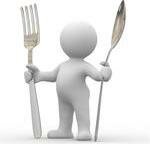
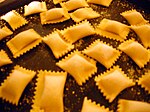
Typical of Monferrato are the vitello tonnato, l’raw meat salad the typical Piedmontese cattle breed (fine chopped with a knife and dressed with oil only, salt and lemon), the acciughe al verde, l’Russian salad with vegetables in mayonnaise, the Peppers steamed to the flame, the stuffed courgette flowers, many quiches, the Piedmont deep-fried assorted fried meat and mixed boiled meat. Among the desserts stand out the panna cotta and Bonet or Bunet, also typical of Langhe, whose name is derived from the mold of tinned copper kitchen, in which it was Cook, making him so acquire a “Cap”.
 The Monferrato, along with Dawn, It is also known as production area of White Truffle and there are many fairs in this regard.
The Monferrato, along with Dawn, It is also known as production area of White Truffle and there are many fairs in this regard.
Architecture flourished in Montferrat since 1000 forward and is clearly visible in countless buildings, churches, castles and palaces of various times many of them still well preserved. He was influenced by currents Romanesque, Gothic and Renaissance before transforming, starting from 1600 in barocco piedmontese. Noteworthy Benedetto Alfieri (1707-1767) of Asti, considered the successor of Filippo Juvarra.



 Do you want to highlight your event or business?
Do you want to highlight your event or business? Alessandra Scotti Web Design Art Director, graphicsdesign, webdesigner
Alessandra Scotti Web Design Art Director, graphicsdesign, webdesigner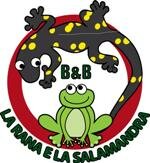 B&B La Rana e La Salamandra House for rent and Bed & Breakfast in Loazzolo
B&B La Rana e La Salamandra House for rent and Bed & Breakfast in Loazzolo Educational Farm ArteMiele Genuine products and educational workshops to discover bees and silkworms
Educational Farm ArteMiele Genuine products and educational workshops to discover bees and silkworms